Dead ends in tank building are not uncommon. They are often caused by militaries who cannot make up their mind about requirements for prospective armoured vehicles. The end result is a tank that has many of its parameters far out of the initially planned range. The Americans were no exception to this rule. One such vehicle, the Medium Tank M7, was even standardized. This tank was designed as a light tank, but accepted into service as a medium.
Light tank with room to grow
The start of production of the Light Tank M2A4 did not mean that the American military would stop its attempts to perfect the light tank. On June 3rd, 1940, the Ordnance Committee signed order #15864 requiring tanks planned for production in 1941 to have 1.5 inches (38 mm) or armour. Work on this requirement resulted in the creation of the Light Tank M3, the main American light tank of WWII. However, this tank was just an evolution of the M2A4. The military wanted a tank with a future. It had to be superior to the M2A4 and M3 in every respect, especially in terms of protection.
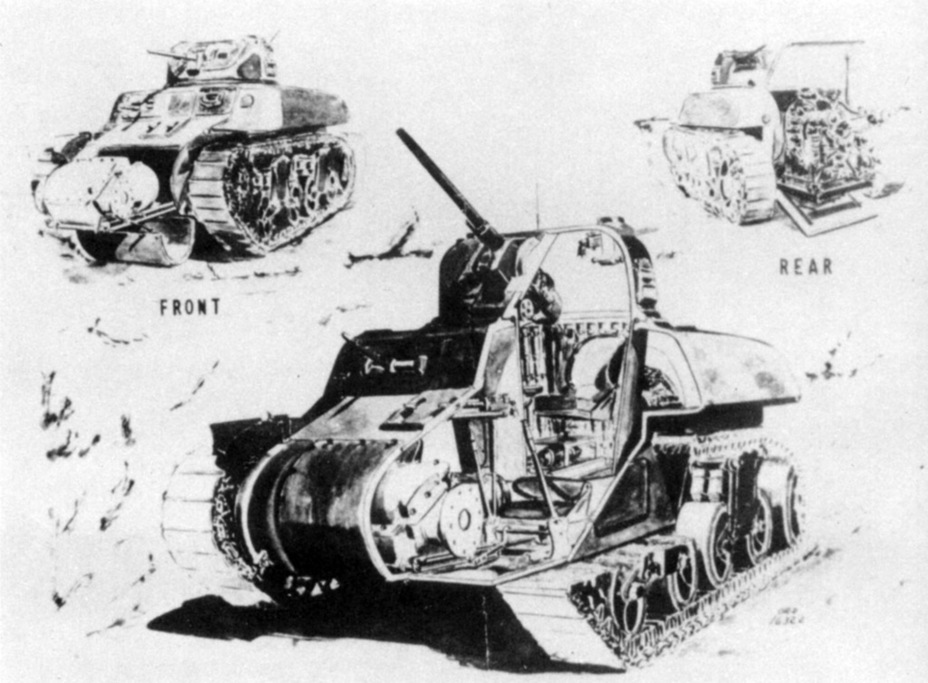
Development of requirements for the new tank began in January of 1941. Overall, it would be development of the ideas that were implemented in the M2A4. However, when the specifications were approved on February 14th, it was already clear that the Light Tank T7 would be radically different from its predecessor. Its mass would be 14 short (12.7 metric) ton, almost 1.5 tons more than the M2A4. The developers of the tank favoured cast hull and turret armour. This decision was influenced by work on creating an M2A4 with a cast hull and turret performed in the fall of 1940.
A full sized model of the Light Tank T7 was finished by the second half of June of 1941. It's obvious that its creators were influenced by the Medium Tank M3 more than the Light Tank M2A4. This is obvious from the design of the turret, which was a slightly shrunken version of the M3's turret. The AA cupola was removed, but a mount for an AA machinegun was added in the rear. The influence of the medium tank can be seen in the bow machineguns, driver's hatch, and various other elements.
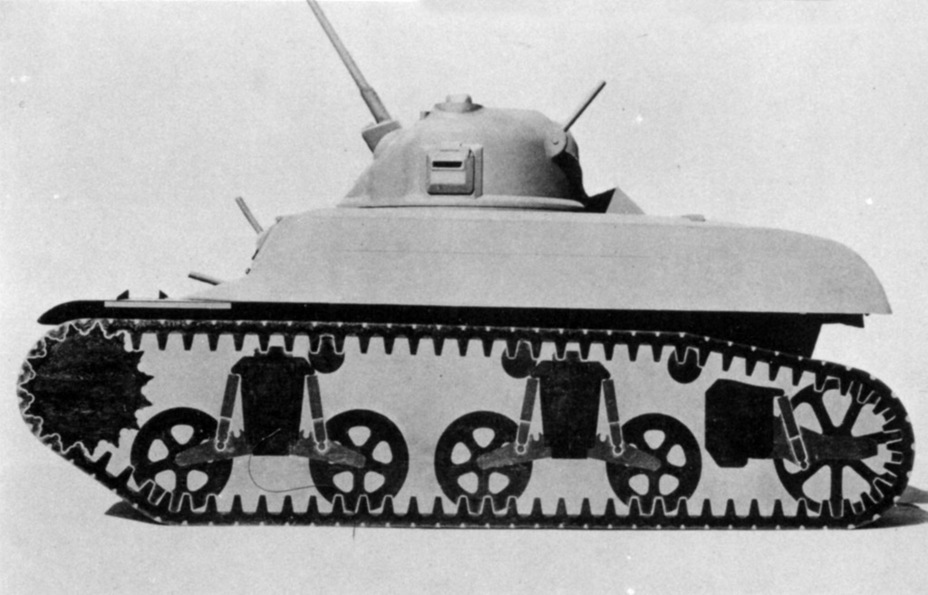
However, there were plenty of original solutions in the T7. The suspension was different, involving paired telescoping springs for each road wheel. Analogous suspension elements were used in the idlers. This kind of system allowed for automatic compensation for sagging tracks. Another feature of the tank was its transmission, or rather, the way it was installed. The transmission and its attached differential could easily be removed through a hatch in the front of the hull. A frame that held the gearbox and differential helped make disassembly easy. A similar frame with rails was present for the engine.
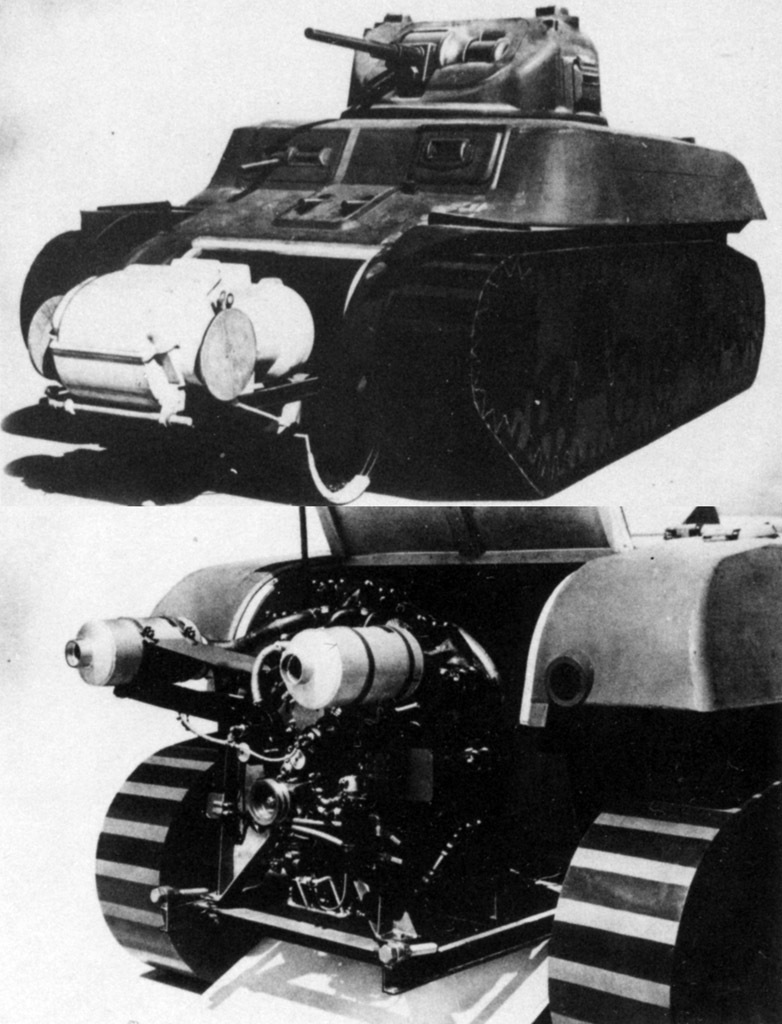
The initial requirements assumed that construction of two prototypes would begin after the full-size model was finished. However, after discussion of the model and requirements on July 11th, 1941, the plans changed. The growing appetites of the American military meant that the designers could not keep the tank below the weight limit. According to calculations, the mass of the tank would be 16 short (14.5 metric) tons. As further development showed, these calculations were rather optimistic.
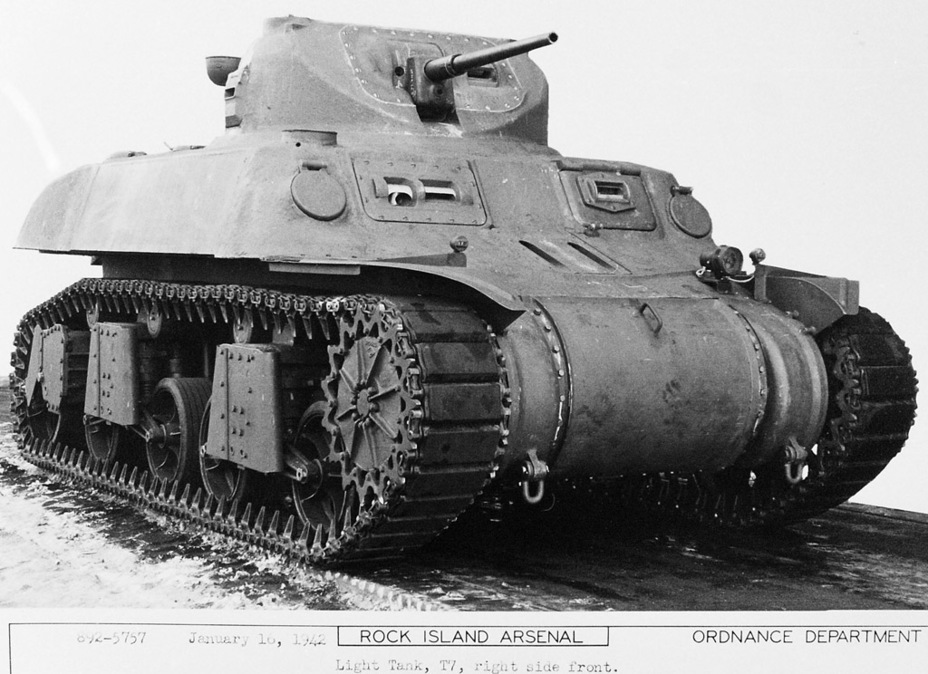
The program split up into five directions in August. The Light Tank T7 would be built with a welded hull and cast turret, VVSS suspension, and rubber-metallic tracks 412 mm in width. The GM Hydramatic would serve as the gearbox, alongside a Continental W-760 engine. The T7E1 had a riveted hull and stamped turret. It had a HVSS suspension, 362 mm wide rubber-metallic tracks, and a Warner Gear torque converter. The T7E2 would have a cast hull and turret, like the model, and a more powerful Continental R975 engine along with the Warner Gear torque converter. The T7E3 would have a welded hull and turret, automatic Detroit Gear gearbox, and a pair of Hercules DRXBS engines. Finally, the T7E4 with a welded hull and turret would have a GM Hydramatic gearbox and a pair of Cadillac Series 42 engines, like the Light Tank M5.
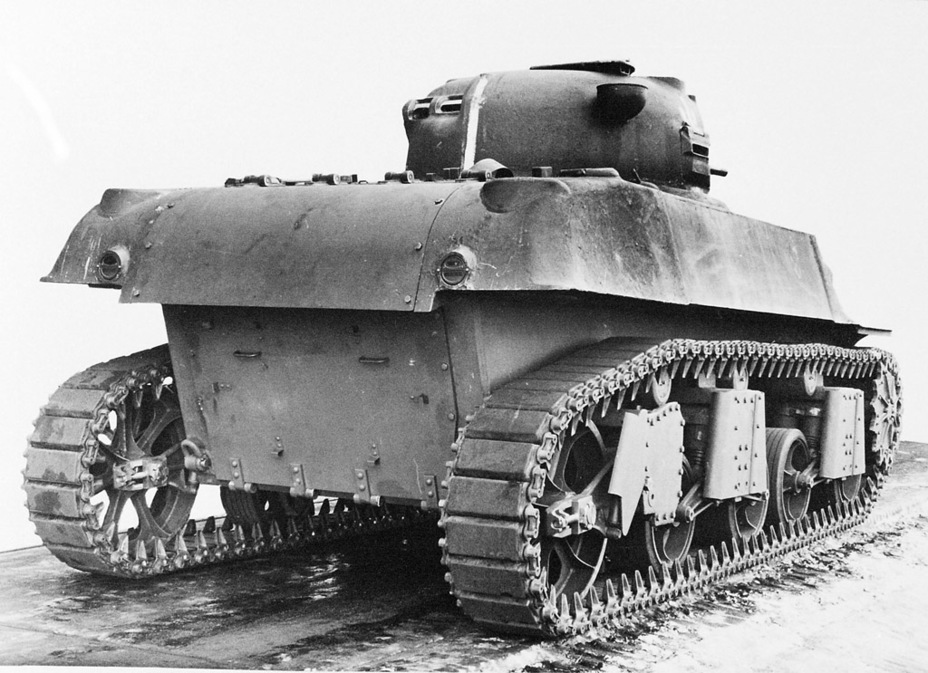
The T7 and T7E1 projects went the quickest. The Rock Island Arsenal began assembly of the tanks by the end of 1941. By then, the T7E1's engine changed. A decision was made to use the air cooled Guiberson T-1071 diesel engine. An automatic Livermore gearbox was planned instead of the torque converter. However, the T7E1 was never completed. The use of rivets was rightfully considered yesterday's news, and the assembly stalled.
The T7 had better luck. Assembly was complete in January of 1942. Overall, the tank was true to the model, but the weight increased more than expected. The hull was not fully welded, a part of it was still cast. Since the requirements for the T7 changed during the previous six months, the tank's mass continued to grow. The Continental W-760 engine was no longer enough. The T7 was only completed to compare it to a superior vehicle.
From light to medium
One of the issues faced by light tanks was their armament. The Ordnance Department knew too well that the thickness of enemy armour would keep growing, and the abilities of the M5 and M6 37 mm guns were limited. A 75 mm gun was too much for a light tank, and the Americans lacked any intermediate armament.
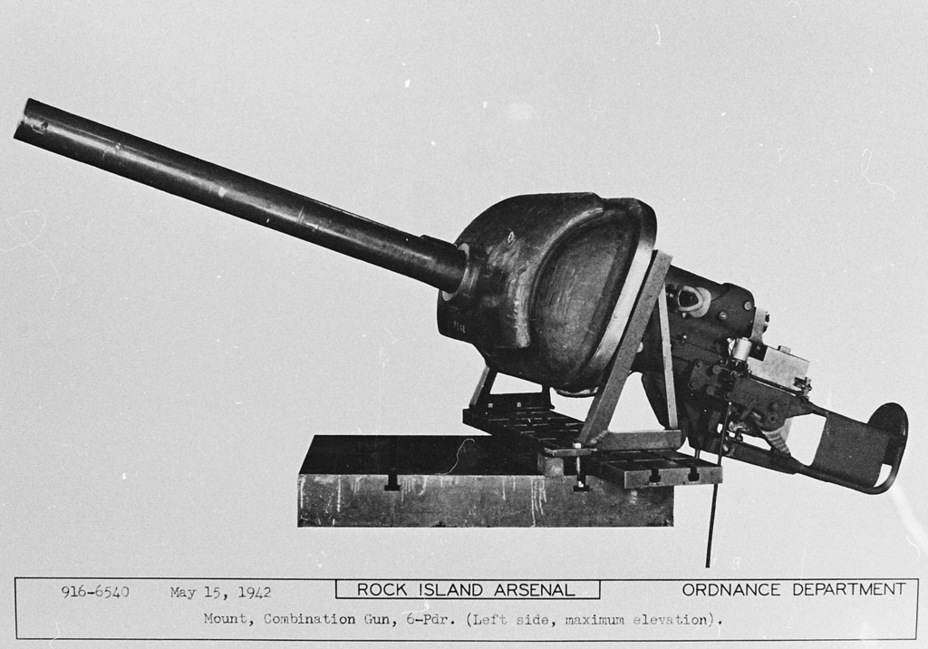
Help came from across the ocean. Britain began working on a 57 mm tank gun in the summer of 1941. The development of a 6-pounder tank gun was slow, but the gun had great potential. Its not surprising that Gladeon Barnes, one of the key employees of the Ordnance Department, gave the order to install it in the Light Tank T7 in July of 1941. Since the 6-pounder gun was bigger and heavier than the 37 mm gun, the turret had to be changed. It was enlarged to fit three people.
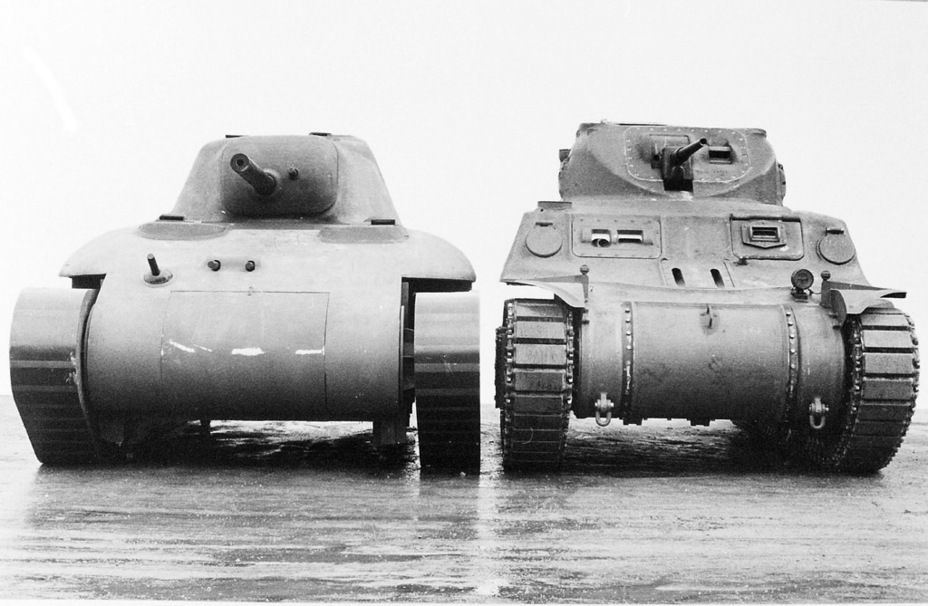
The replacement of the gun and turret was only the beginning. During the design of the T7E2, T7E3, and T7E4, a decision was made to change the upper hull. It was lowered by 18 cm, and the front slope was increased. The driver and assistant driver's hatches now opened upwards. This decision improved the toughness of the front armour, while keeping the thickness the same.
The T7E2 program was given priority. A full sized model was built in November of 1941. Perhaps it was finally obvious that only the Continental R975 engine would ensure the tank's mobility despite the ever-growing mass.
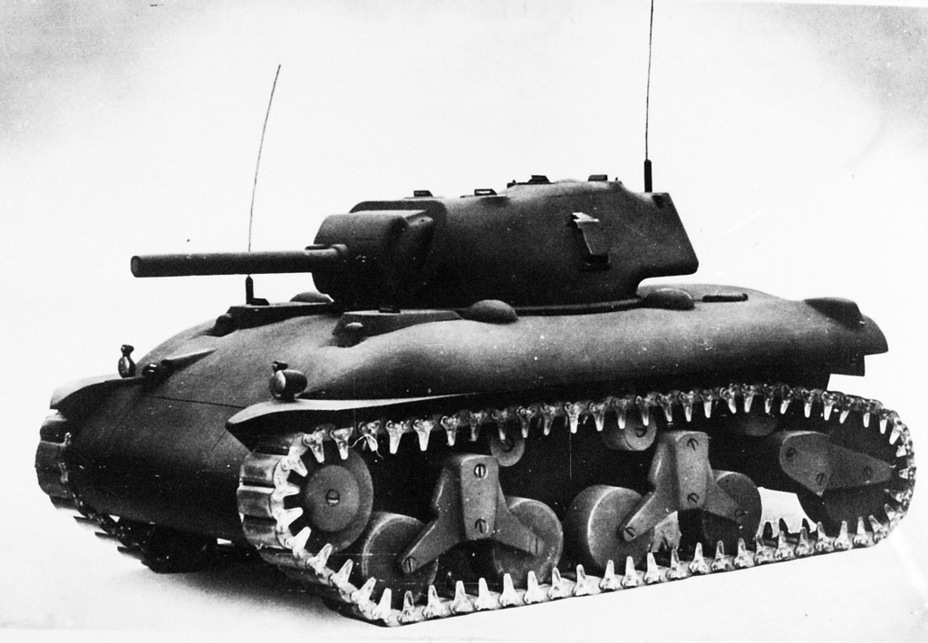
Even though the T7E2 had higher priority, work on the T7E3 and T7E4 continued. Overall, the tanks would have been very similar, with the difference that the hull and turret would have been welded. The biggest issue with these vehicles was the increasing weight. It became clear that their engines were hopeless after it crossed the 20 ton mark. Work on the T7E3 and T7E4 first stalled, and then was cancelled completely.
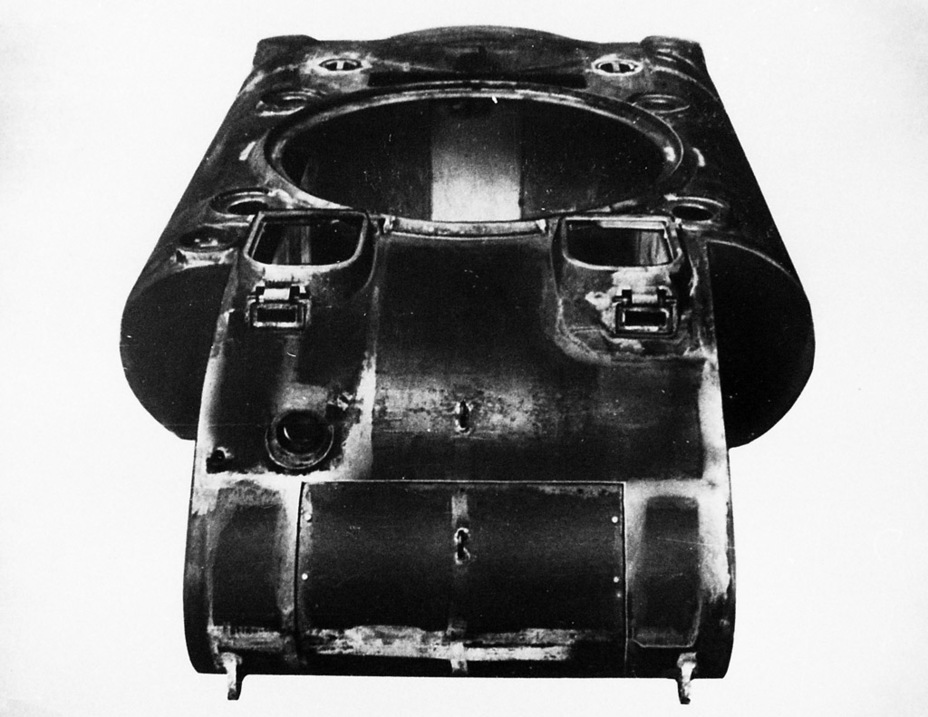
When the Light Tank T7E2 was built in May of 1942, its mass reached 23.5 tons. The tank was still classified as light, but this classification was a cruel joke. The characteristics of the tank were greater than those of the British Crusader tank, including the armour.
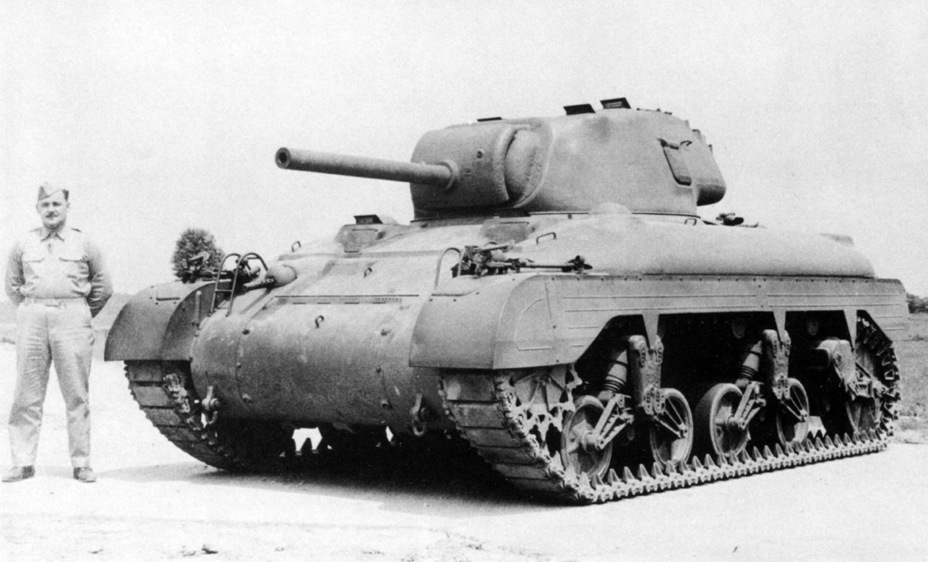
Overall, the tank was similar to the model, but there were some differences. First of all, realizing that it was hard to hit anything with the bow guns, the pair of fixed machineguns in the hull was deleted. The experimental prototype preserved a bump where the machineguns would have been.
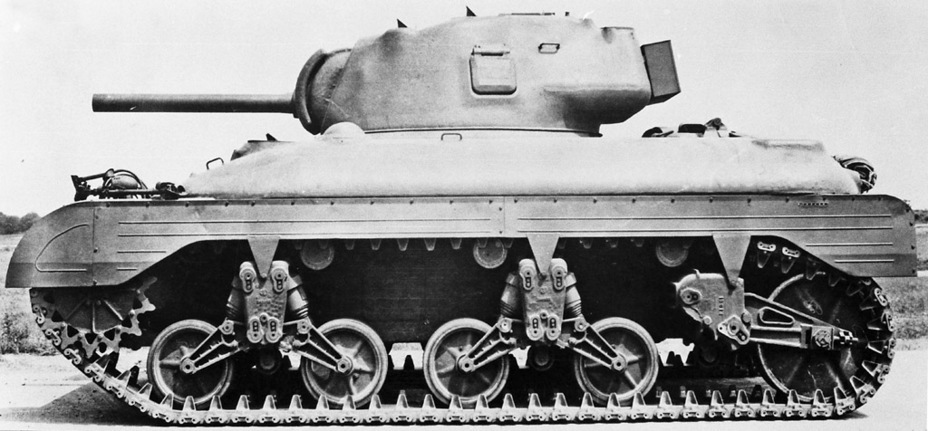
If we treat the T7E2 as a medium tank, and not a light one, then it did not look too bad. With the same engine as the Medium Tank M4A1, it was 7 tons lighter. The top speed was 62.4 kph, which is good even for a light tank. However, trials showed that the Warner Gear torque converter left much to be desired. It had to be replaced with a Spicer torque converter. The suspension performed well, even though it was initially designed for a tank from another weight category. The difference in protection was not great. Even though the thickness of the M4A1's front armour was 12.5 mm greater, the effective armour was similar due to the slope. Doubled controls were also a plus.
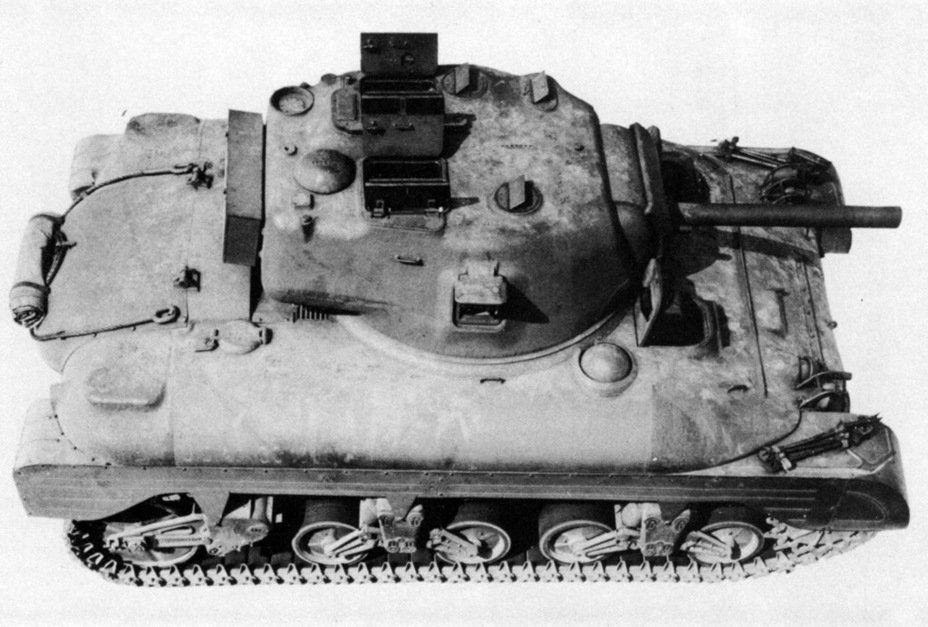
Strangely enough, the Americans did not like the cannon most of all. The 6-pounder gun had quite decent characteristics. However, the 43 caliber long version did not significantly surpass the 75 mm M3 in penetration. A rational idea of installing the M3 gun into the T63 gun mount came up. Models showed that such a conversion would not be difficult. The T64 gun mount was born, and was standardized as the M47.
In early August of 1942, when the decision to install the 75 mm gun was made, the tank was renamed. The Light Tank T7E2 was now the Light Tank T7E5. It did not remain light for long. The new gun was not the only change planned. The thickness of the front armour was increased to 51 mm, the pistol ports from the sides were removed, and a new turret traverse mechanism was introduced. These and other changes increased the tank's mass to 24.5 tons. It was silly to keep calling it light, and on August 6th, 1942, it was standardized as the Medium Tank M7.
The International Harvester Corporation was chosen to produce the tank. The first tanks were built by this company by October 5th, 1942. The first M7 was very similar to the T7E2, with the difference that its pistol ports were welded shut and the stowage was altered. In part, a large box was added to the turret bustle. Later vehicles received special scrapers to clear the road wheels from mud. This design did not last long in production. Due to these experiments, tanks from the pilot batch differ from one another.
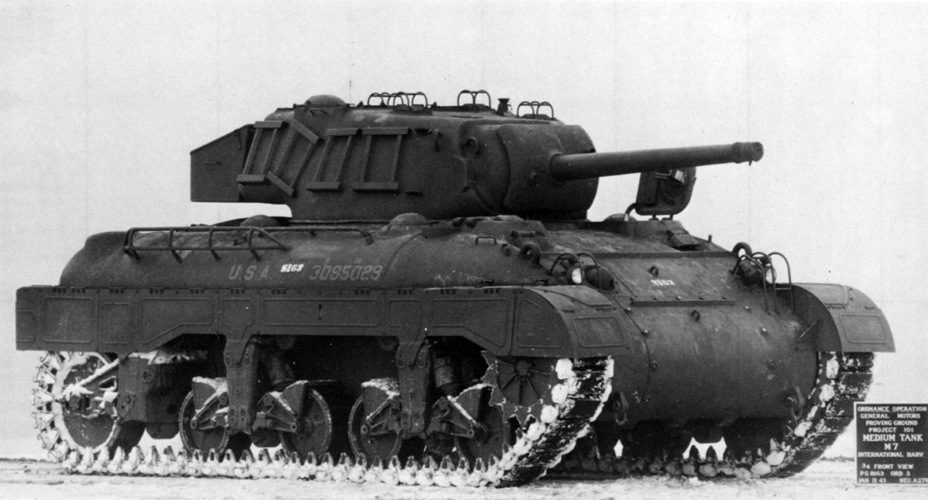
The Medium Tank M7 did not remain in production for long. The increased weight was the last nail in its coffin. The large amount of cast parts of the hull and turret increased its mass to 26 tons, lowering the top speed from 56 to 50 kph. An attempt was made to save the tank by improving the tolerances on the hulls and turrets, but that did not help. These issues were not unique to the Americans. Soviet KV-1 tanks also had issues with extra heavy turrets.
Meanwhile, production of the Medium Tank M4A3 began in June of 1942. These tanks carried 500 hp Ford GAA engines. The mobility of the M7 and M4A3 was similar, and the former light tank lost its edge. A decision was made to cancel production. International Harvester produced 13 tanks, 7 of which were officially accepted.
One last attempt was made to salvage the tank by installing the Ford GAA engine in it. This model was called the Medium Tank M7E1, but work did not move past the experimental stage. Officially, work on the M7 was concluded on January 20th, 1944, but real work stopped at least six months beforehand.
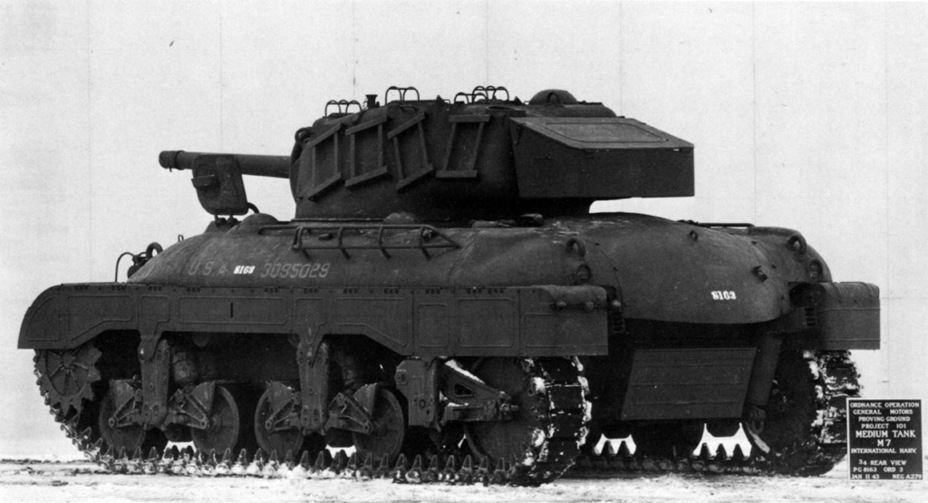
Such a sad fate of the light tank that grew into a medium did not mean that it was a complete failure. American engineers worked out some solutions during its design that were later used on production vehicles. For instance, the turret of the T7E2 was slightly changed and used on the T17 family of armoured cars. The engine and transmission have a more interesting descendant. After several changes, they migrated to the GMC T70 tank destroyer, along with the large front hatch and a rail mounting. In other words, the work did not go to waste.
Failed Lend-Lease
There is a Russian connection in the story of the Medium Tank M7. A group of Soviet specialists arrived at the Aberdeen Proving Grounds in January of 1943. The goal of the trip was familiarization with the M7. A movie was shown that demonstrated its mobility, as well as photographs. Despite the commission's requests, they did not get to keep any of the photos. Lieutenant Pile, the lead tank testing engineer, acted as a consultant.
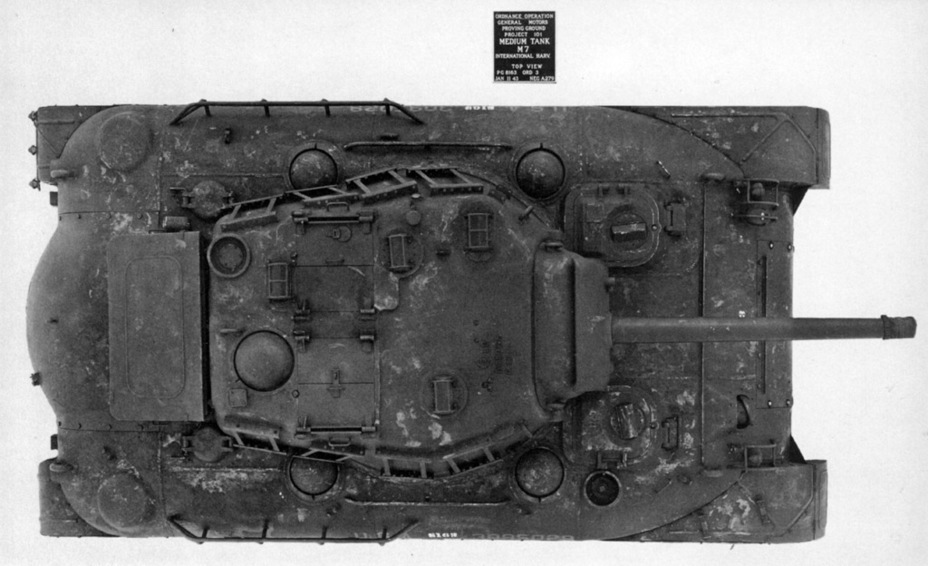
It seems that an attempt was made to confuse the Soviets. The tank's fate was sealed by the start of 1943. Nevertheless, the commission was told that International Harvester was producing the tank. They were told that the tank was built for the British, hence the 6-pounder gun. Pile also said that the British and American armies were interested in wide-scale production, which was not true.
Having inspected the tank and obtained sufficient information, the Soviet commission made its verdict. The R-975 engine was deemed poor, as it took high octane gasoline. The rear air intake was also criticized. Its design meant that a grenade or a Molotov cocktail could easily be thrown through it. However, the commission found many positives of the design. The overall design of the hull and turret were deemed good, and the low silhouette was praised. The high power to weight ratio, low ground pressure, ease of driving, and ease of removing the engine and transmission were other advantages. With a diesel engine and a new air intake, this tank could have been America's best tank, according to the Soviet specialists.
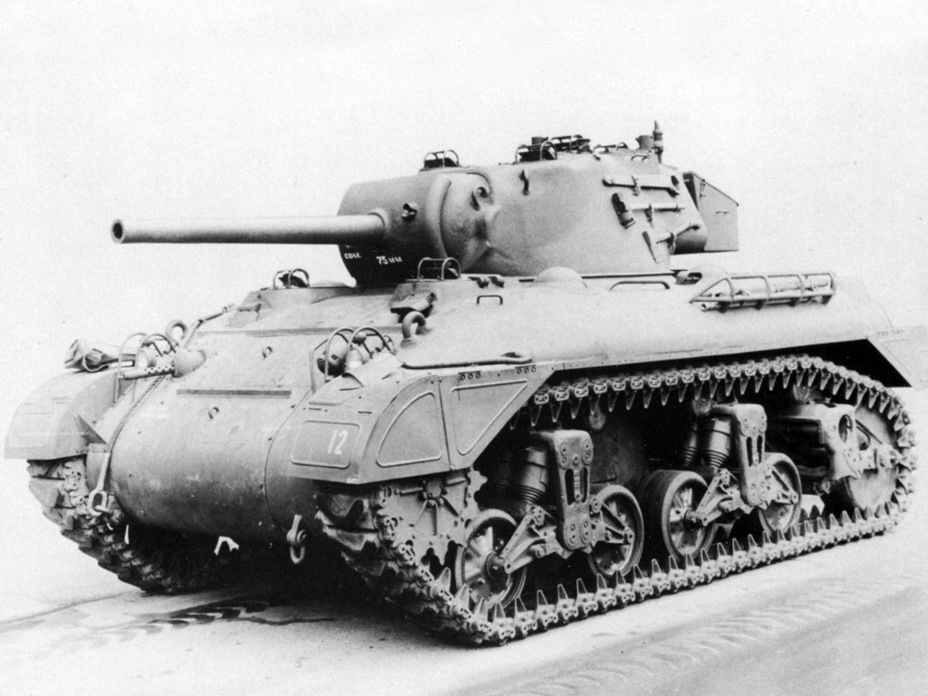
The next time the Soviets encountered the M7 was in the summer of 1943. A complete report on what tanks were being produced or developed in the USA was compiled. The following note was made.
The new M7 medium tank is currently undergoing trials, the results of which are still unknown. It is clear that the tank is not a good medium tank, and became such by accident (overweight light tank). The tank's suspension will no doubt break often, since it was designed for a light tank and a weight of 25 tons would be too much.
A feature of this tank is the presence of special frames on ball bearings, on which the engine and transmission are installed. If the engine breaks down, it will be easy to repair in place. All one would have to do is flip open the armour covers up and down, pull out the engine, and it will be completely accessible. Engineers from our Purchasing Commission examined this tank and had a good opinion of it.
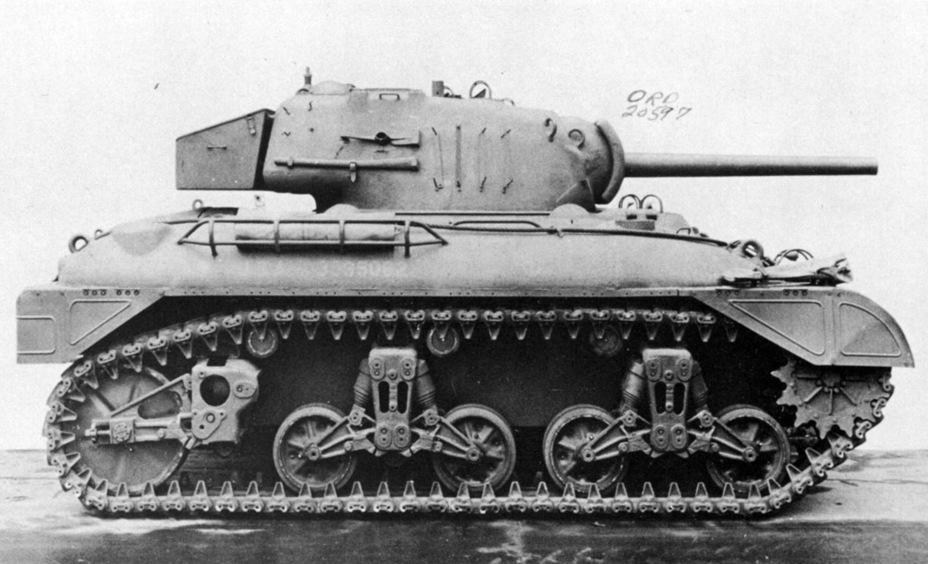
As you can see, Soviet specialists were interested in individual parts, rather than the whole tank. At most, several tanks would be purchased for study. However, none were ever bought. By this point, the Americans had long buried the Medium Tank M7.
Translated by Peter Samsonov. Read more interesting tank articles on his blog Tank Archives.
Sources:
- National Archives and Records Administration;
- Central Archives of the Russian Ministry of Defence;
- Stuart History of the American Light Tank, Vol. 1, R.P. Hunnicutt, Presidio Press, 1992.







